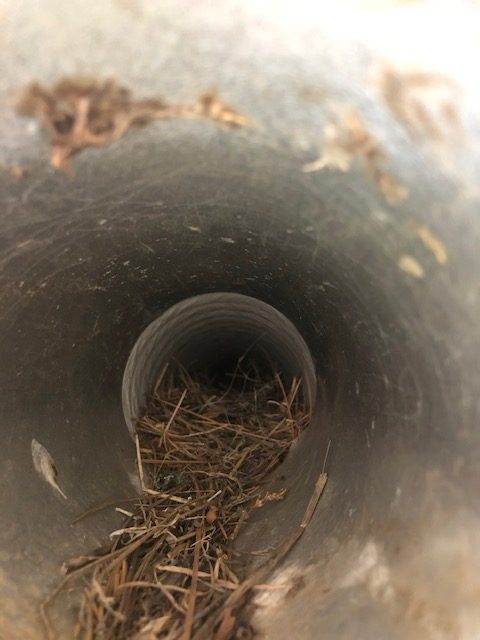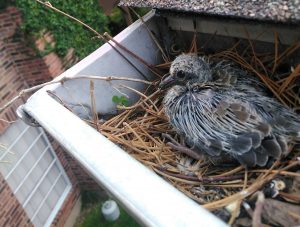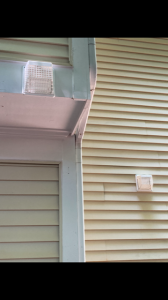Birds occasionally nest or get stuck in vents. Vents are attractive locations for birds to build nests off the ground, away from predators, and enclosed for protection from the elements. European starlings, house sparrows, and pigeons are some of the most common birds to nest in vents.
Common places birds enter include vents on the side of the house, kitchen and bathroom exhaust vents, and others.
Bird Nests in Dryer Vents
Birds are initially attracted to the warmth of the vents, which is why they are commonly found in dryer vents and kitchen exhaust vents. Vents are dangerous to young birds too. They sometimes fall down the vent exhaust pipe and become trapped.
This becomes a fire hazard when birds nest in these locations.

Dangers of Bird Nests in Dryer Vents & Exhausts
A bird’s nest inside your house should not be ignored, and a nest inside your vents is especially dangerous. Bird nests in vents are dangerous because humidity and steam can spread disease, including histoplasmosis found in bird droppings.
- Blocked Airflow: The nest material can obstruct the airflow in the dryer vent, causing the dryer to work harder and potentially leading to overheating or even a fire.
- Moisture Buildup: The presence of the nest can trap moisture in the vent, leading to mold and mildew growth, which can compromise the structural integrity of the vent and the surrounding areas.
- Pest Infestations: Birds nesting in dryer vents can attract other pests, such as insects or rodents, which can further damage the home and pose health risks.
- Damage to the Vent: The nest-building process can cause physical damage to the dryer vent, such as holes or cracks, which can allow pests and weather elements to enter the home.
- Fire Hazard: The accumulated lint and nest material in the vent can become a fire hazard, especially if the dryer is running frequently.
Health Concerns from Bird Nests
Bird nests in dryer vents can block the vent, causing lint and other debris to build up. This buildup can create a breeding ground for bacteria, mold, and other microorganisms that can be harmful to human health. When the dryer is in use, these pathogens can be circulated throughout the home, potentially leading to respiratory infections, allergies, and other health issues.
Additionally, bird droppings and feathers in the vent can contribute to spreading diseases, such as histoplasmosis and salmonella.
Signs of Birds in Dryer Vents
The most common signs of a bird nest in a dryer vent that homeowners notice are:
Reduced airflow from the dryer vent
Unusual noises coming from the vent, such as chirping or rustling sounds
Visible nesting material or debris around the vent opening
Dryer takes longer than usual to dry clothes
Increased energy usage or higher utility bills due to the blocked vent
How to Get Birds Out of Dryer Vents
If you notice signs of a bird in your ventilation system, call Trutech. Numerous types of pests can access your HVAC system. The wildlife experts will first confirm the type of pests in your air ducts and then create a custom wildlife removal plan.
If a bird is nesting in your vents, we will safely remove the bird and the nest. After a humane bird removal from the vent or exhaust, we apply sanitization agents and an ectoparasite treatment to decontaminate the area and stop the spread of diseases. Finally, we install exclusions like a vent guard for long-term bird control.
Some Geographic Restrictions
Local Bird Control from Trutech Wildlife Service

Bird Control in Overland Park, KS
You’ll likely notice signs of a bird’s nest along grooves in your roof, within your chimney, or in cracks in your siding. Although you may be hesitant to call a wildlife control company in Overland Park, it’s essential to consider these services. Bird droppings can carry histoplasmosis, which can have

Bird Removal in Charlotte
Charlotte and Mecklenburg County have an extensive network of birding spots that include greenways, parks, and wildlife refuges. There are 470 species of birds in North Carolina, and you can find most of them in Mecklenburg County. Not only are birds beautiful to watch, but they also provide a multitude



